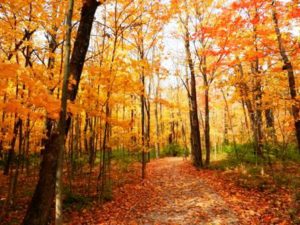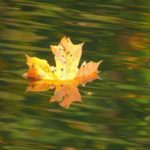By Rich Niccum, Education Services Manager

Where has the time gone? I can’t believe the first day of fall is tomorrow, September 22. For many people, fall is their favorite time of the year. For some it means cooler temperatures and promise of football games, and for others, it is the end to grass mowing. But for many, it is the explosion of color erupting from the trees that makes fall their favorite season.
Each year, the experts predict when we can expect to see “peak” color, deriving their predictions from the amount of rain we have had, the temperatures and the amount of sunlight. Unfortunately it is not an exact science and Mother Nature routinely throws a curveball.
Why do leaves fall? Leaves of deciduous trees (those that lose their leaves each year), change color and drop to the ground each fall for several reasons. The primary reason is due to the cold temperatures trees face each winter. Trees breathe and transpire through their leaves, much like we do through our mouths. If left hanging, the leaves would be exposed to cold, dry winds that would pull much of the moisture out of the trees. In addition, the freezing temperatures we experience each winter would freeze any water in the leaves causing them to crumble. The shedding of leaves also allows trees to pull water away from its trunk and store it in its roots, further protecting the tree from the freezing effects of water. If they didn’t pull the water down into the roots, the trees would literally explode when the water in their trunks froze.

Why do leaves change color in the fall and not at other times of the year? As summer draws to a close, you probably notice the days getting shorter. Less sunlight signals the tree that it should begin preparing for winter; it does the same thing for animals. Like squirrels, trees rest during the winter and live off of food they stored during the summer. As the trees shut down the food manufacturing process, the green chlorophyll that drove the process disappears. The green fades, and the yellow and orange pigments that already were present in small amounts begin to show through. The bright reds and purples we see occur mainly in the fall and are due to glucose (sugar) that is trapped in the leaves after photosynthesis stops. Sunlight and cooler nighttime temperatures turn the glucose red. The brown we see, mainly in oak trees, is caused by waste products left in the leaves.
Want to learn more? We’ll be exploring the wild, wonderful woodlands at Gallant Woods Park next week. Join us Sunday, September 30, at 10 a.m. for a walk through the woods. All ages are welcome! And to see what else we have to offer this fall, check out the online program calendar.






